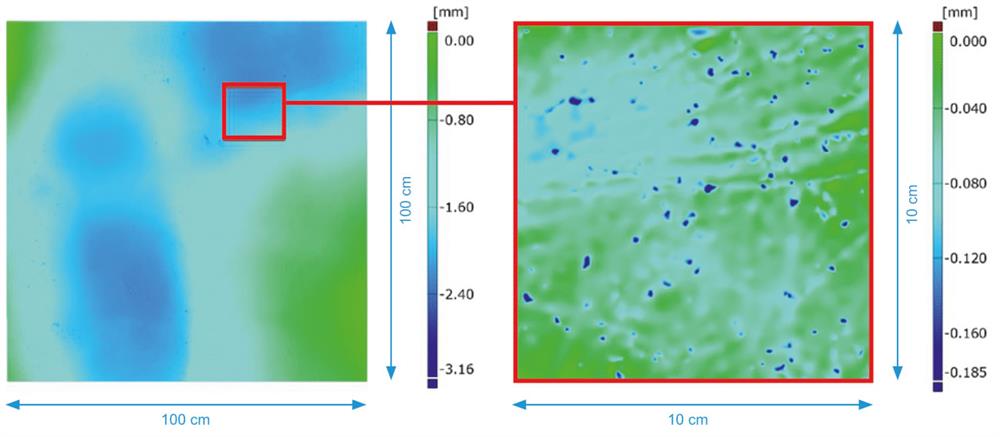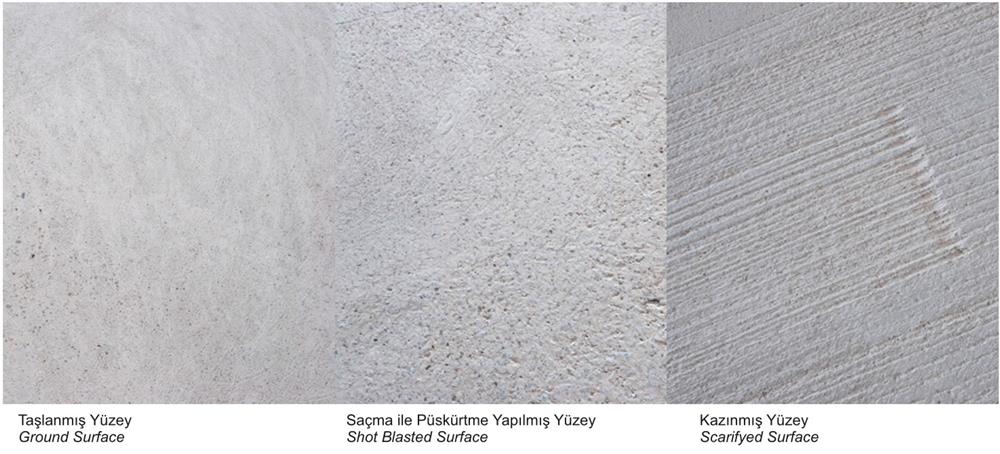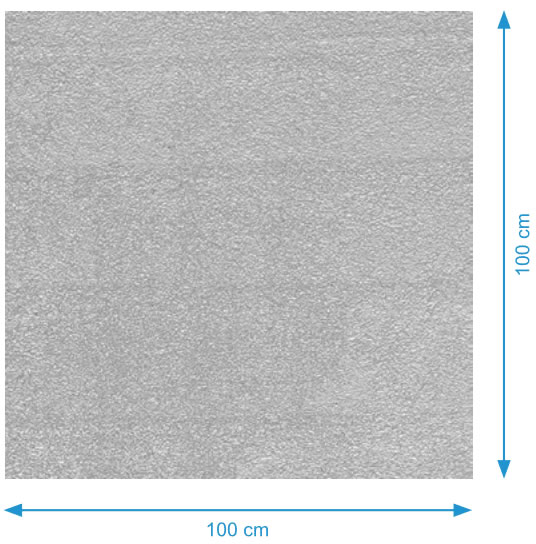
Test Results Revealed After
Test Results Revealed After
Grinding versus other methods
Achieving a level surface reduces the costs for covering material. This is only possible with a grinding machine. Going over the same area several times with a grinding machine increases the smoothness, unlike shot blasting or scarifying machines. In the following measurement results comparing grinding, shot blasting and scarifying as floor prep methods, we can demonstrate the importance of achieving a smooth floor. We have used a 3D scanner where the distance between each measurement point is 0.15 mm and a precision of 0.03 mm per millimetre in order to be able to give as exact a picture of reality as possible.
 Grinding
Grinding
1m2
From the lowest point to the zero point: 1,481 cm³ Corresponds to covering: 1.5 L
1dm3
From the lowest point to the zero point: 0.54 cm³ Corresponds to covering: 0.54 ml



Shot blasting
1m2
From the lowest point to the zero point: 2,067 cm³ Corresponds to covering: 2.1 L Covering compared with grinding: +40%
1dm2
From the lowest point to the zero point: 4.25 cm³ Corresponds to covering: 4.25 ml Covering compared with grinding: +680%



Scarifying
1m2
From the lowest point to the zero point: 2,551 cm³ Corresponds to covering: 2.6 L Covering compared with grinding: +72%
1dm2
From the lowest point to the zero point: 11.6 cm³ Corresponds to covering: 11.6 ml Covering compared with grinding: +2029%

Adhesion to Concrete Floor
The advantages of grinding a floor instead of shot blasting it are numerous. Despite that, a number of floor contractors shot blast floors when they are unsure as to whether the required floor covering will adhere to a ground surface. In the following independent test, carried out by SP Technical Research Institute of Sweden and Betongintitutet (CBI, Swedish Cement and Concrete Research Institute), we can demonstrate that the adhesion of a floor covering on a ground concrete floor is better than on a blasted concrete floor.
Tensile strength
Test 1
Ground: 4.65 MPa
Blasted: 2.95 MPa
Test 2
Ground: 4.95 MPa
Blasted: 4.59 MPa
Test 3
Ground: 4.25 MPa
Blasted: 3.83 MPa
Tensile strengthaverage value
Ground surface: 4.62 MPa Blasted surface: 3.79 MPa
All the test results clearly show that the break occurs in the concrete and not in the joint between the concrete and the floor covering. The results also show that the shot blasted surface causes greater variations between the highest and lowest result (1.64 MPa), compared with the ground surface (0.7 MPa). This suggests that a shot blasted surface contains peaks with a worse C value and that the shot blasted surface risks containing microcracks
